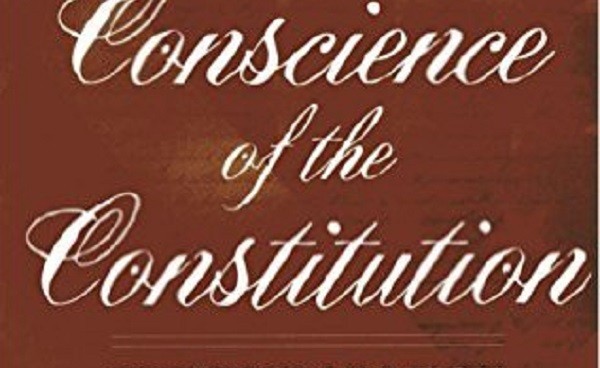The Primacy of Liberty in the U.S. Constitution

Book Review: “The Conscience of the Constitution: The Declaration of Independence and the Right to Liberty” by Timothy Sandefur; Cato Institute (2014)
Every now and then a person comes across a book, an idea or an event that so fundamentally affects them that they are not the same after the encounter. Such it was with “The Conscience of the Constitution: The Declaration of Independence and the Right to Liberty” by Timothy Sandefur. The book was an epiphany.
It is not that the tension between liberty and democracy is a new observation. There are actually few cases or pieces of information in this book that are particularly new. It is the systematic, logical way of using this information that makes this book so brilliantly persuasive. If a “classic” is defined as a book that makes the reader see things in a different way and permanently changes the reader’s long-held understandings and beliefs, then “The Conscience of the Constitution” can absolutely be designated a classic.
American’s in the 21st Century are more influenced by the progressive era thinkers like Oliver Wendell Holmes, John Dewey and Louis Brandeis then by the 18th Century enlightenment thinkers like Locke, Hobbes, and Montesquieu. Many Americans believe that order and democratic rule is the basic premise of our government and that individual liberty is granted by the government as a privilege.
However, the government the framers created in 1787 was not a direct democracy. It is a Federal or Democratic Constitutional Republic. Concepts like initiative and referendum, popular election of United States Senators provided by the Seventeenth Amendment in 1913, prohibition against alcohol provided by the Eighteenth Amendment in 1919 and many of the laws restricting individual rights, regulating business and conserving public land were the products of progressive era thinkers at the dawn of the 20th Century.
The thinkers who adopted the Constitution in 1787 included many of the same people who voted for independence in 1776. The philosophy those people expressed in the Declaration is embedded in the Constitution. Any attempt to understand the original meaning of the words used by the authors of the Constitution and the arguments made by the people who debated ratification must use the Declaration of Independence as their philosophical dictionary.
When viewed through the lens of the founders, it is clear that, “America’s constitutional order is premised…on the basic right of each person to be free. People are born with liberty; their rights are not privileges that government gives to them as it pleases. Legitimate government is based on, and bound by, their rights, and nobody—no king, no legislature, no democratic majority—has any basic entitlement to control them”
By reading the Constitution with the Declaration of Independence, Timothy Sandefur presents his argument in the clearest possible way that the Constitution was adopted to protect individual liberty and freedom from government intrusion into our daily lives.
“The Declaration helps make constitutional priorities clear—that rights come first and government power only second—and thus it anchors our legal and political system on a firm philosophical ground.,” said Mr. Sandefur.
The book is divided into four sections. The beginning outlines the difference between freedom and democracy and includes an exposition of the declaration of independence and the impact of the Civil War and reconstruction era.
Mr. Sandefur tells the story of the wolf and the sheep, most famously told by Abraham Lincoln, and he comes back to this story throughout the book. A hungry wolf sees a flock of sheep and decides to eat one. “The shepherd drives the wolf from the sheep’s throat, for which the sheep thanks the shepherd as a liberator, while the wolf denounces him for the same act as the destroyer of liberty…Plainly the sheep and the wolf are not agreed upon a definition of the word liberty.” –Lincoln’s address at the Sanitary Fair (April 18, 1864)
The second section focuses on substantive due process. He traces the concept from the Magna Carta through Lawrence v. Texas to illustrate “the continuing split between those who prioritize liberty and those who prioritize democracy in constitutional interpretation.”
The last section of the book addresses judicial activism and theories of constitutional interpretation. Mr. Sandefur concludes that “Judges fail in their responsibility when they abandon individual rights to the mercies of the legislature. Upholding the Constitution requires judges—no less than legislators, governors, or presidents—to respect the primacy of liberty.”
This short book about the Constitution is a must read for every American.
